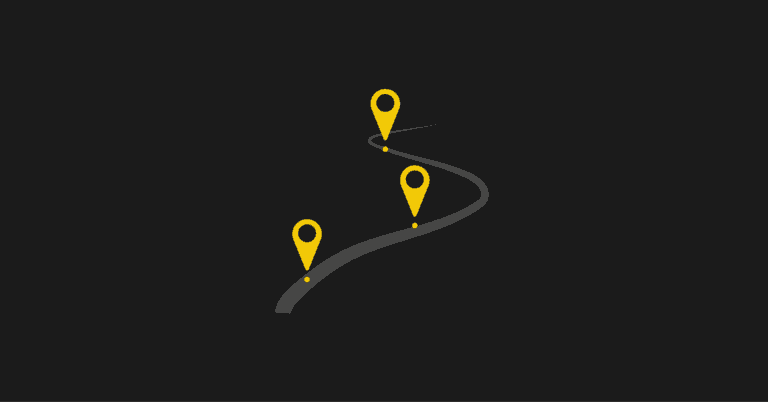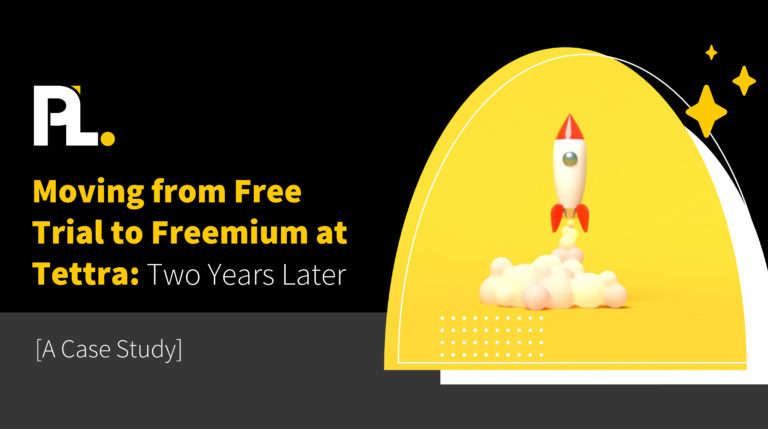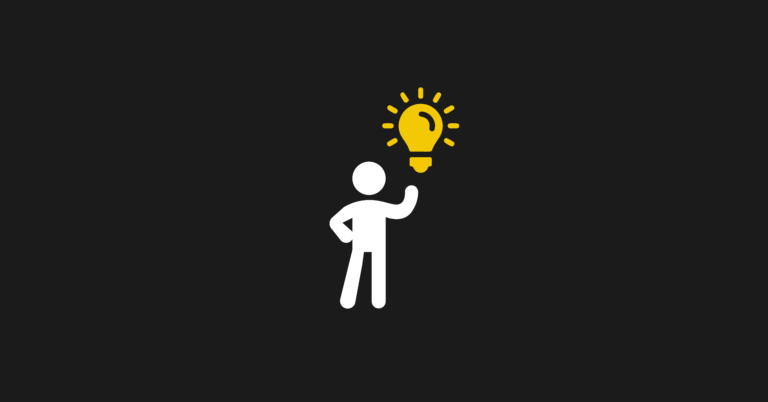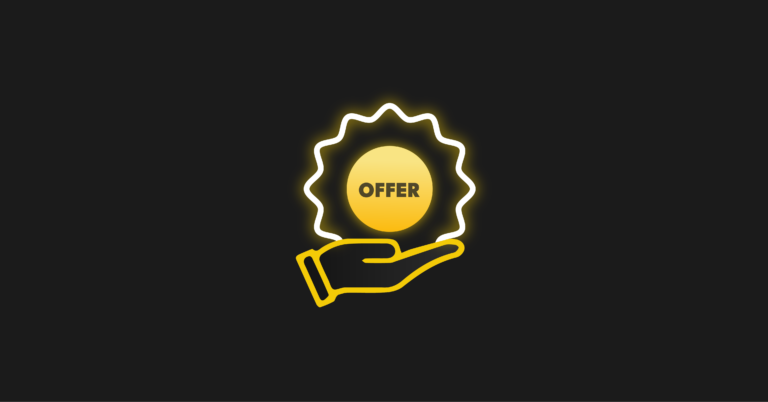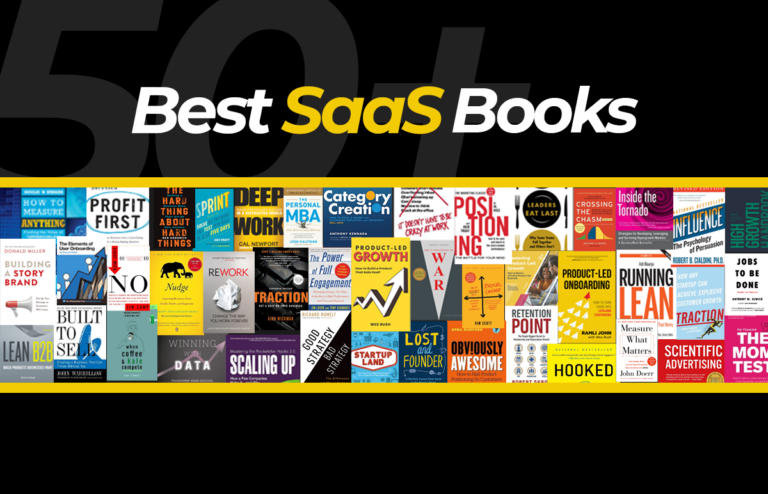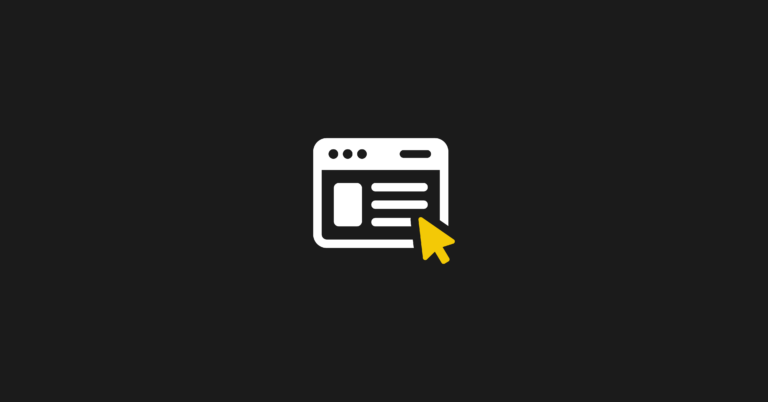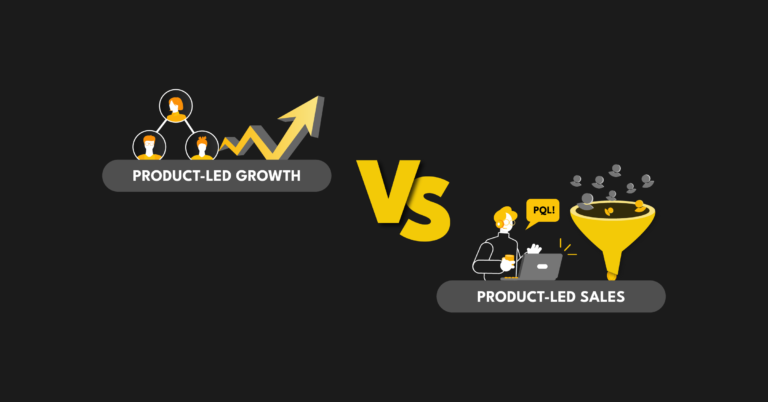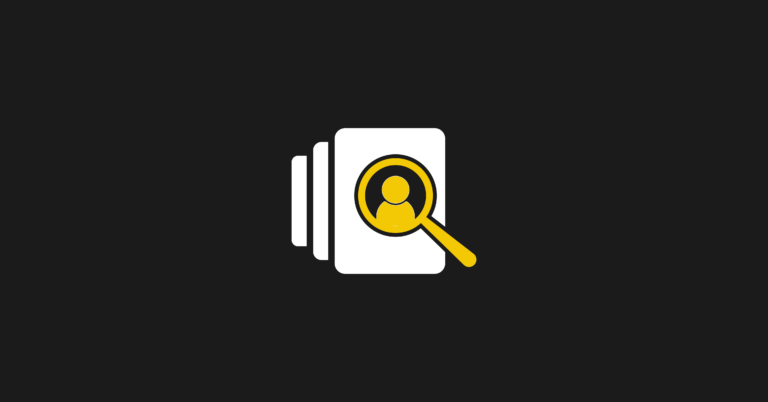This is an excerpt of a new book I’ve written with Wes Bush called Product-Led Onboarding™: How to Turn New Users into Lifelong Customers. You can buy it now.
In a previous article, I talk about how the BJ Fogg Behavior Model is the key to unlocking behavior change and product adoption for new users. It emphasizes three elements that must converge simultaneously for a behavioral switch to occur:
- Motivation (M): The desire or willingness to do the new behavior.
- Ability (A): The ease in doing the new behavior.
- Prompt (P): The cue or trigger to do the new behavior.
Together, these elements form the BJ Fogg Behavior Model:

Today, we are going to talk about the third point in the model: Prompts.
In terms of user onboarding, Prompts are critical during two moments:
- To help users achieve their desired outcome and experience the value of a product soon after signing up.
- To help users to continue to use a product until they adopt it into their life and workflow.
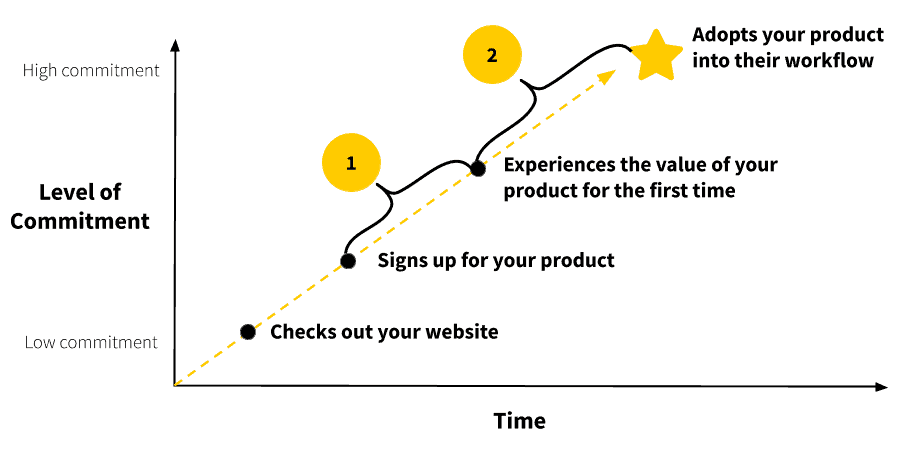
During the user onboarding journey, prompts can occur inside the app (product tours, checklists, tooltips, and other Product Bumpers) or outside of it (emails, SMS, phone notifications, and old-school direct mail). They’re critical in creating an engaging environment for new users to learn how a product works and to decide if it’s the right fit for them.
For Prompts to be effective, they should be personalized and timely. Avoid a purely time-based email flow at all costs. The problem with this approach is:
- It does not consider what the user has already done in your product.
- It does not personalize the emails to drive users to the next step in the onboarding process.
- It does not adapt to users needs, anxieties, and challenges.
To avoid coming across as annoying and spammy, trigger emails based on the actions users have or have not taken inside the product. This ensures the communication is both timely and relevant.
At ProductLed, we use a three-step process to use Prompts in the onboarding process. You can apply this process to all types of Conversational Bumpers, such as SMS text messages, browser notifications, in-app messages, direct mail, and more. Here’s how to create a behavior-based onboarding email campaign.
Step 1: Identify the key milestones in your Straight-Line Onboarding
This could be:
- Right after users sign up, so you can welcome them.
- Critical onboarding steps users need to complete to experience the value of the product.
- The moment users achieve their First Strike.
- Before, during, and after the free trial period ends.
Here’s the Straight-Line Onboarding users experience when they sign up for Canva from the homepage:
- Click “Sign Up” on the homepage
- On the “Get started” modal, click “Sign up with email”
- Enter your full name
- Enter your email
- Enter your password
- Click “Get started”
- Select an option from “What will you be using Canva for?”
- Click “skip” on “Try Canva Pro” modal
- Click “skip” on “Add team member” modal
- Select a template
- Edit a template
- Add your own photos
- Click on download
- Click on print, download, or share
- Try “Canva Pro” for 30 days
From my perspective, there are seven key milestones in Canva’s onboarding:
- User signs up
- Select a template
- Edit a template
- Add your own photos
- Download design
- Start Canva Pro Trial
- Canva Pro Free Trial Ends
Step 2: Add behavior-based Prompts based on the actions users take inside the product
The next step is to add behavior-based Prompts to the Straight-Line Onboarding milestones.
Not all user journeys are the same. One visitor could sign up for the product and then immediately become distracted by a phone call. Others might sign up, play around with a few core features and decide not to convert.
By sending relevant emails filled with juicy content related to a user's specific needs, the product is kept at the top of mind and kickstarts their motivation to use it again.
Behavior-triggered emails also have the potential to take users further on in their onboarding journey. By sharing super-specific information at the right time, you’re not at risk for repeating details they already know or that’s ahead of their learning curve. Keep the emails resourceful, with one clear CTA that drives them back to actions they haven’t yet finished.
There are a ton of powerful tools out there that can help you create behavior-based emails. For better segmentation, look for ones that target based on product and user data such as Intercom, Userlist, or ActiveCampaign.
To build a behavior-based onboarding email flow, look at the success path of your Straight-Line Onboarding milestones.

For each step, determine the information or content users might require to complete it.
If they lack motivation, share content that amplifies the pain of their current situation. Reiterate the value of your product.
If it’s a lack of ability, share relevant templates, resources, video tutorials, or educational articles. Also, remind them how to get in touch with the team for support.
The first important onboarding step after users sign up with Canva is selecting a design template. Ask yourself, why might new Canva users not select a template? Maybe they lack inspiration. In that case, use an email to send relevant design templates.

The next step in Canva’s Straight-Line Onboarding is to edit a template. Once again, ask yourself why users might not edit a template they’ve selected. Maybe they’re confused about how to do it. Perhaps they need help from the support team.
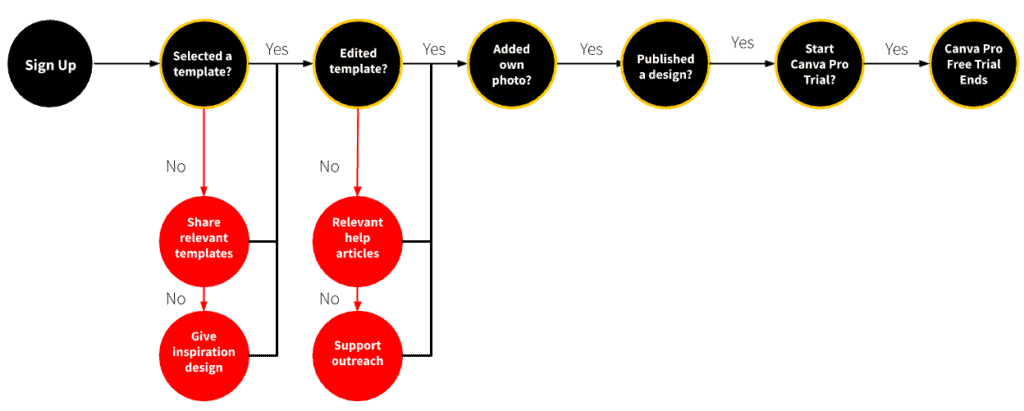
Repeat this process for the remaining milestones. And don’t forget to send welcome messages!
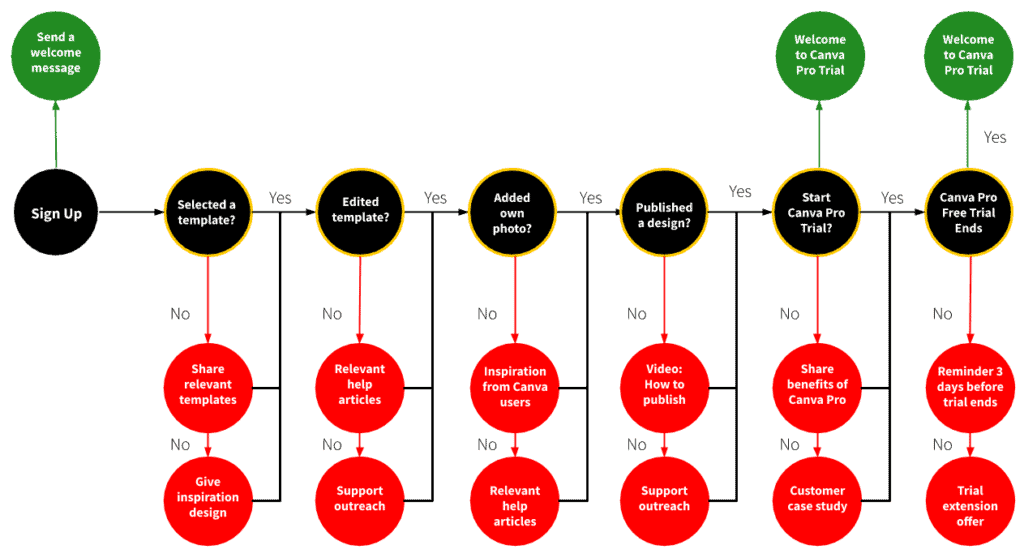
Here are some additional examples of other types of content you can send during the onboarding process. Take a peek at Chapter 13 of the Product-Led Growth book for easy copy-and-paste templates.
- Value-based emails focus on communicating the functional, emotional, or social job of a product. How will your product make the user’s life better?
- Usage tips are helpful nudges that direct users to take steps that will set them up for success.
- Case studies share customer success stories to inspire users to continue using the product and become paying customers. Share stories to overcome objections.
- Trial expiration warning emails remind users how many days are left in the trial period and emphasizes the value of upgrading to a paid account.
- Trial extension emails ask users if they want a trial extension. You’d be surprised how many trial extension requests end up turning into paying customers.
- Sales touches are when the sales or customer success teams reach out to users. These can be automated or manual emails.
Step 3: Fill in the details
The final step is to fill in the details of each email. If you’re at a loss for words, below are some templates and examples.
Here’s an email template you can send to welcome new users:
| Subject: a personal hello Body: Hey, I’m one of the co-founders of [Your Company], and I’m excited you’ve decided to sign up. The [Your Company] Team and I have poured our heart and soul into making [key outcome your product solves for] suck less, so I get really fired up when someone new, like you, joins the ranks. My top priority is to make sure that you’re able to [insert value proposition], so if you have any questions about our product, the website, or even my lackluster mustache, feel free to reply directly to this email. I hope you can [accomplish key outcome in product]! Stay in touch! P.S. Yes, I’m a real human. – Wes, Co-Founder |
Wistia’s Soapbox product is a perfect example of a usage-based onboarding email. After I create my first video, they sent a usage-tip email to encourage me to share it with someone.
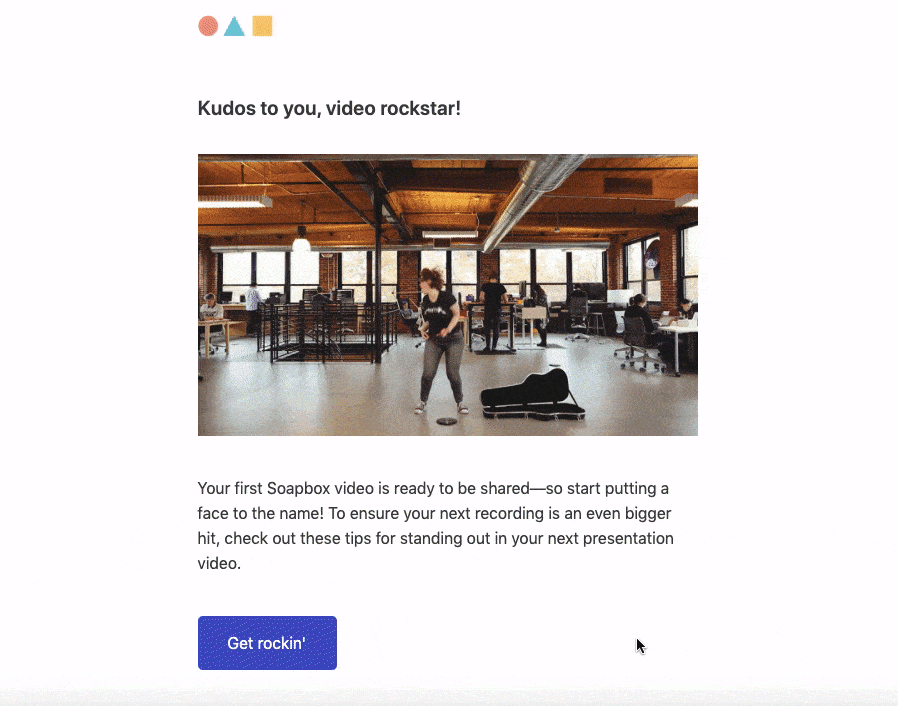
Another type of onboarding prompt is a case-study email. This could include a video testimonial, customer story, or old-fashioned case study. Invision does this by showcasing some of the incredible designs their customers have created with the product.
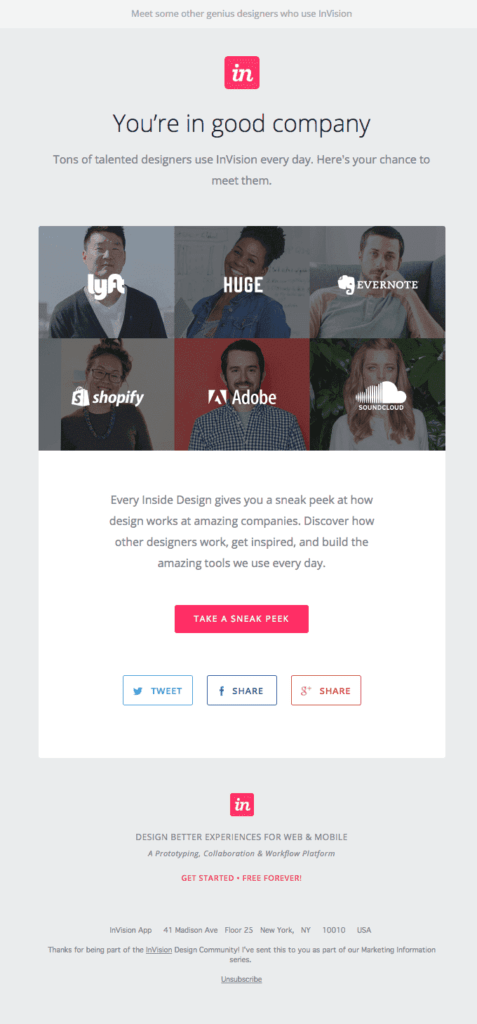
For more examples of onboarding emails, check out Chapter 13 of the Product-Led Growth book.
Conclusion:
In the user onboarding experience, behavior-based emails are critical to help users achieve their desired outcome and continue using a product until they adopt it into their life and workflow.
Here are the three steps we use at ProductLed to build a behavior-based email campaign.
- Identify the key milestones in the Straight-Line Onboarding
- Add behavior-based prompts
- Fill in the details.
This is an excerpt from the upcoming book Product-Led Onboarding™: How to Turn Users Into Lifelong Customers. Get the first chapter and join the waitlist now.


